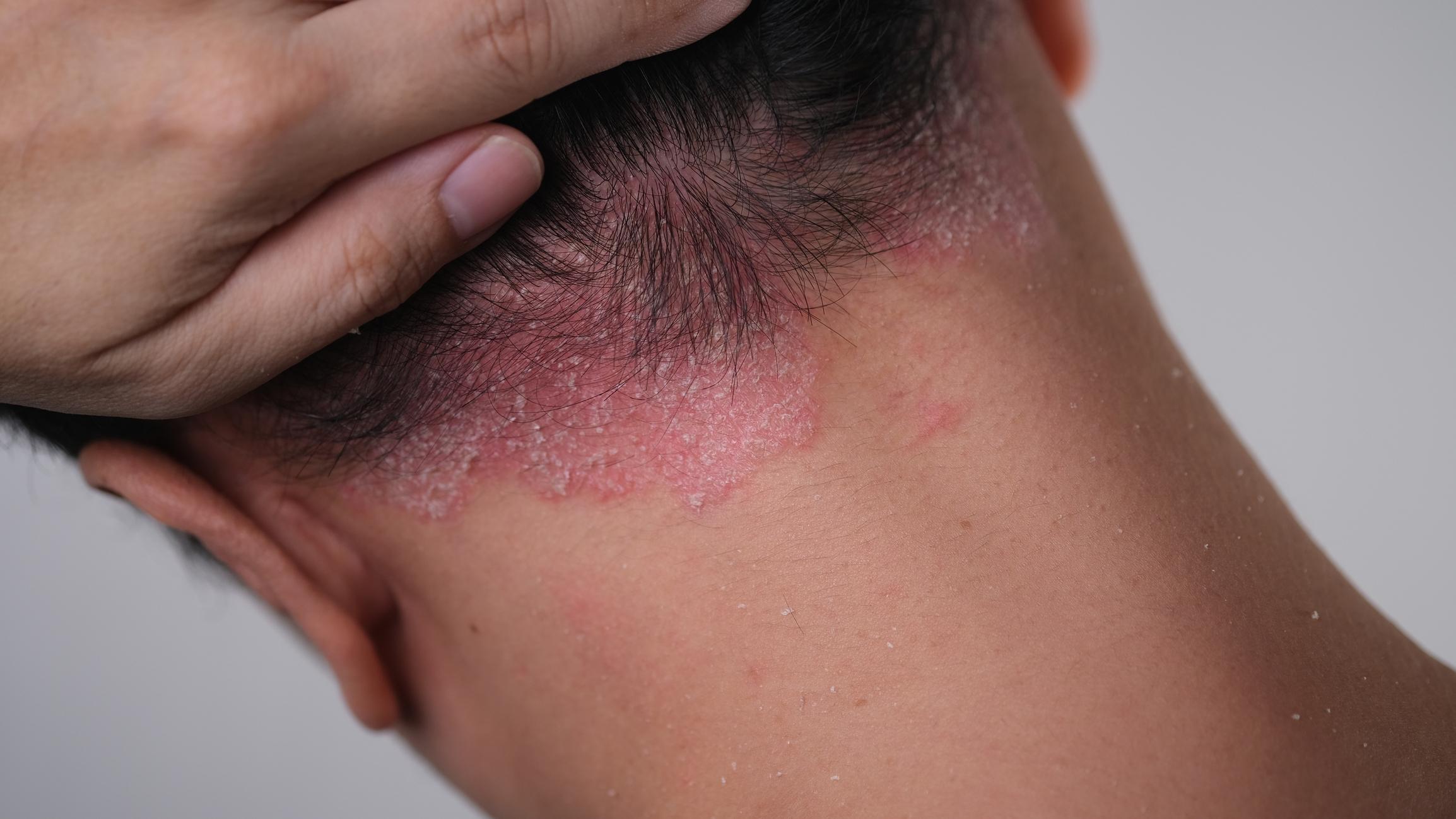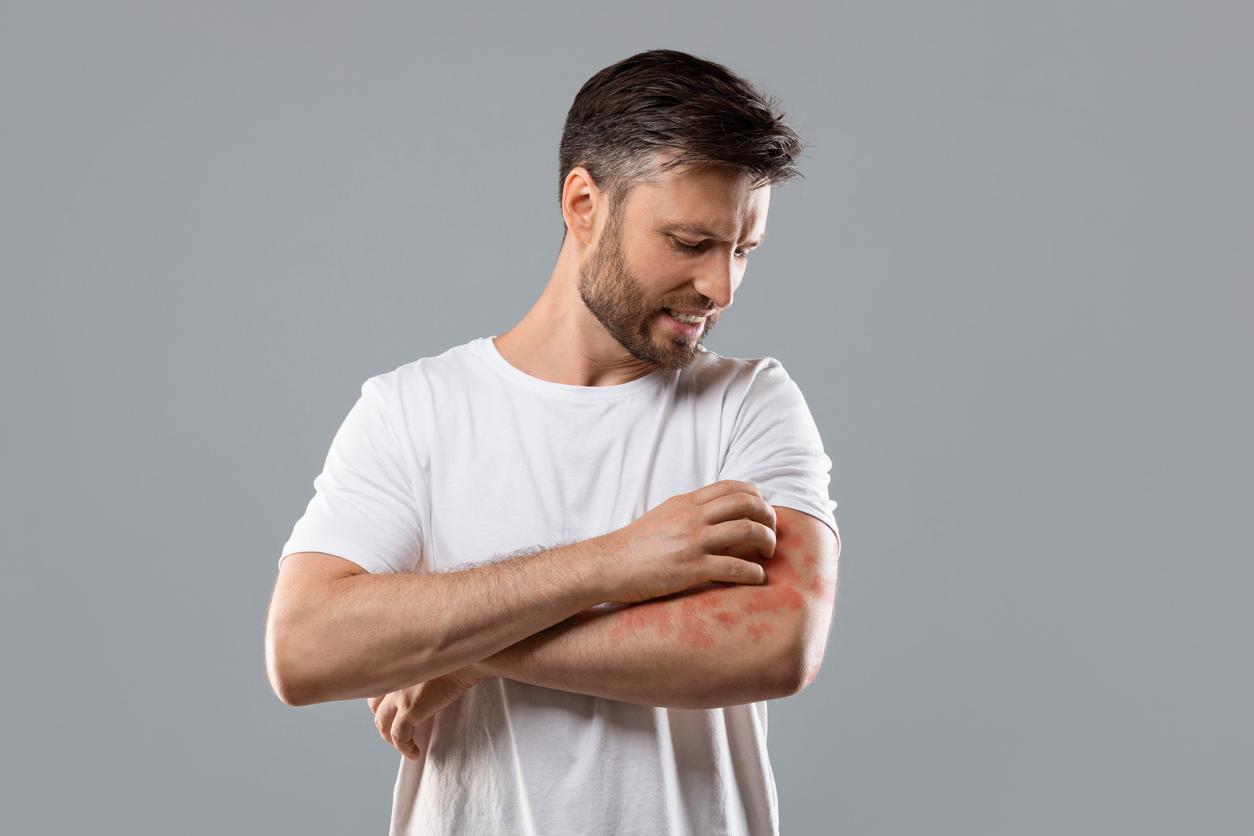Between the diagnostic wandering, the heaviness of the symptoms and the lack of information, people with psoriatic arthritis still suffer far too much.

- Psoriatic arthritis is a chronic inflammatory disease that mainly affects the joints and often the skin.
- It is strongly linked to psoriasis, and affects around 95,000 people in France.
The Janssen Laboratory recently conducted with IPSOS and AFPric* a survey of patients with psoriatic arthritis and healthcare professionals involved in their management.
A high level of discomfort
This work first reveals that patients are affected by many symptoms: 97% of those surveyed are affected by joint stiffness / blockages, persistent pain or feelings of heat in the joints, and deformities, swelling or inflammation. joints. 89% of patients also say they suffer from at least one skin symptom (persistent itching, red patches, scaly patches, damage to the nails and genital areas). 66% of patients also have extra-articular symptoms: ocular, digestive, etc.
These manifestations of the disease cause a significant level of discomfort, which affects the quality of life of patients. “When asked to rate the level of discomfort of their joint damage on a scale of 0 to 10, patients give an average score of 6.8/10″. can we read in the report. “More than 1 in 4 patients assess their discomfort at the maximum level, giving a score between 9 and 10/10 (27%), and 61% give a score of 7 to 10”, still write the pollsters.
The majority of patients thus declare that their psoriatic arthritis has caused or increased a certain number of problems. These are most often worries about fatigue (85%), sleep (71%), overwork and stress (63%), anxiety (62%) or depression (45%). The survey also reveals strong repercussions on the daily life of active patients: nearly 1 in 2 people declare having already had a work stoppage due to their illness during the last 12 months (47%). The average duration of these stops is 2 months.
Information deficit
The diagnostic delay is also relatively long, since the average duration between the first symptoms and the identification of the disease is 2 years and 4 months for the patients questioned. “The average age at which patients were diagnosed is around 38 years old”add the authors of the survey.
Another lesson from the survey: even though the patients were diagnosed 10 years ago on average, they nevertheless express a very significant lack of information on many aspects of their disease. With the exception of their current medicines, for which they most often consider themselves “rather” or even “completely” well informed (69%), they are more divided on the rest and in particular on new treatments (only 56% say they are well informed on this subject), the evolution of their disease (55%), the complementary practices to relieve them (55%), the origin and causes of their pathology (51%), the progress of research (48%), psychological aid and support (48%) or the rights they enjoy (45%).
Concerning the future of medications, health professionals and patients generally express similar expectations. They all put in number 1 their wish to have an effective treatment at the same time on joint and cutaneous manifestations, in number 2 a treatment with the least adverse effects in the long term and in number 3 a treatment which relieves quickly joint pain.

.

















